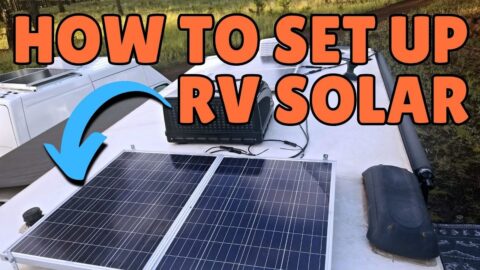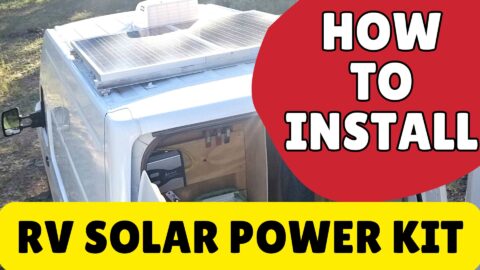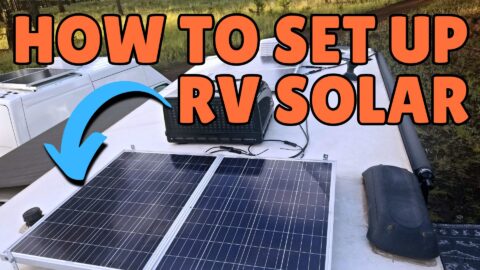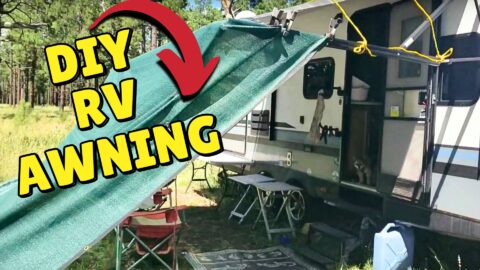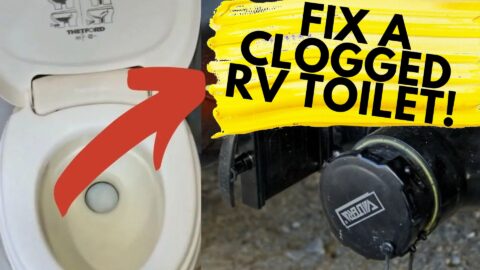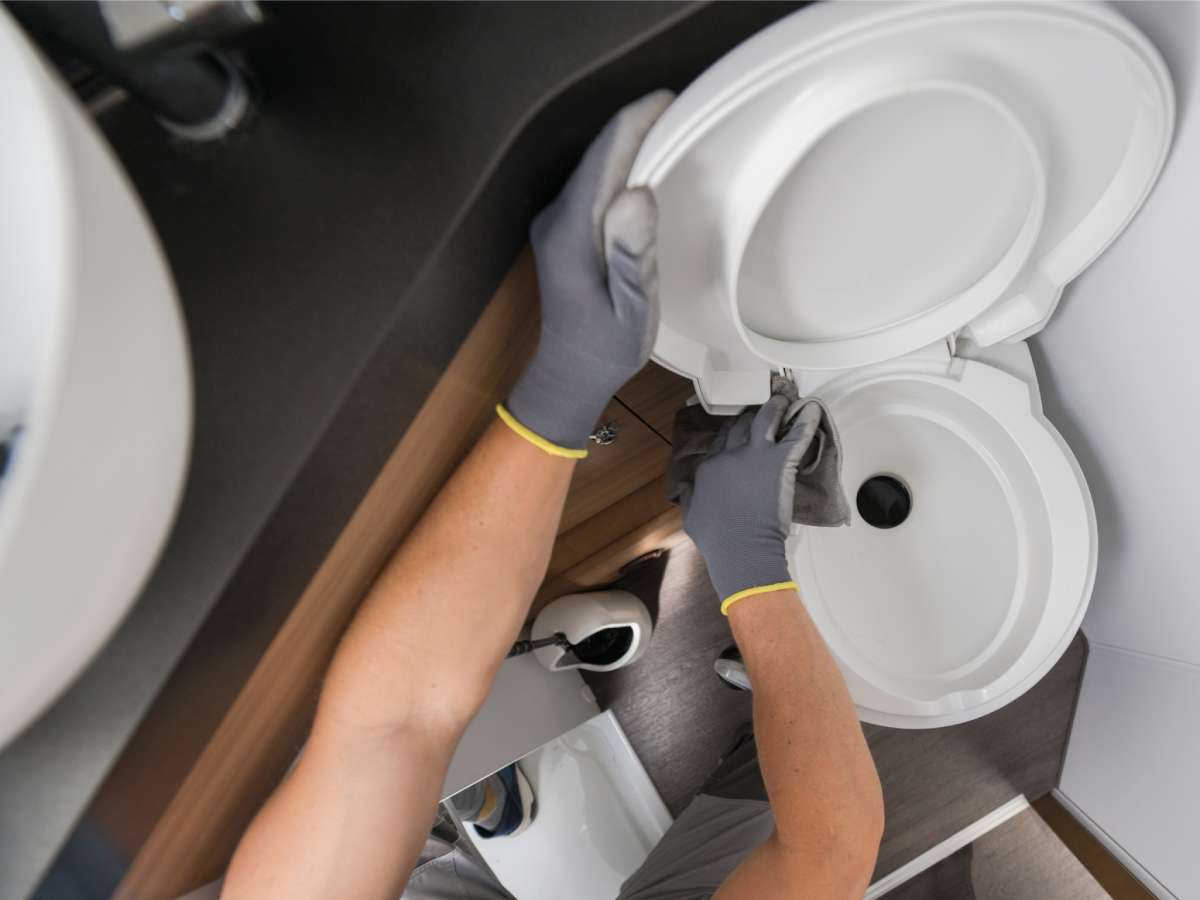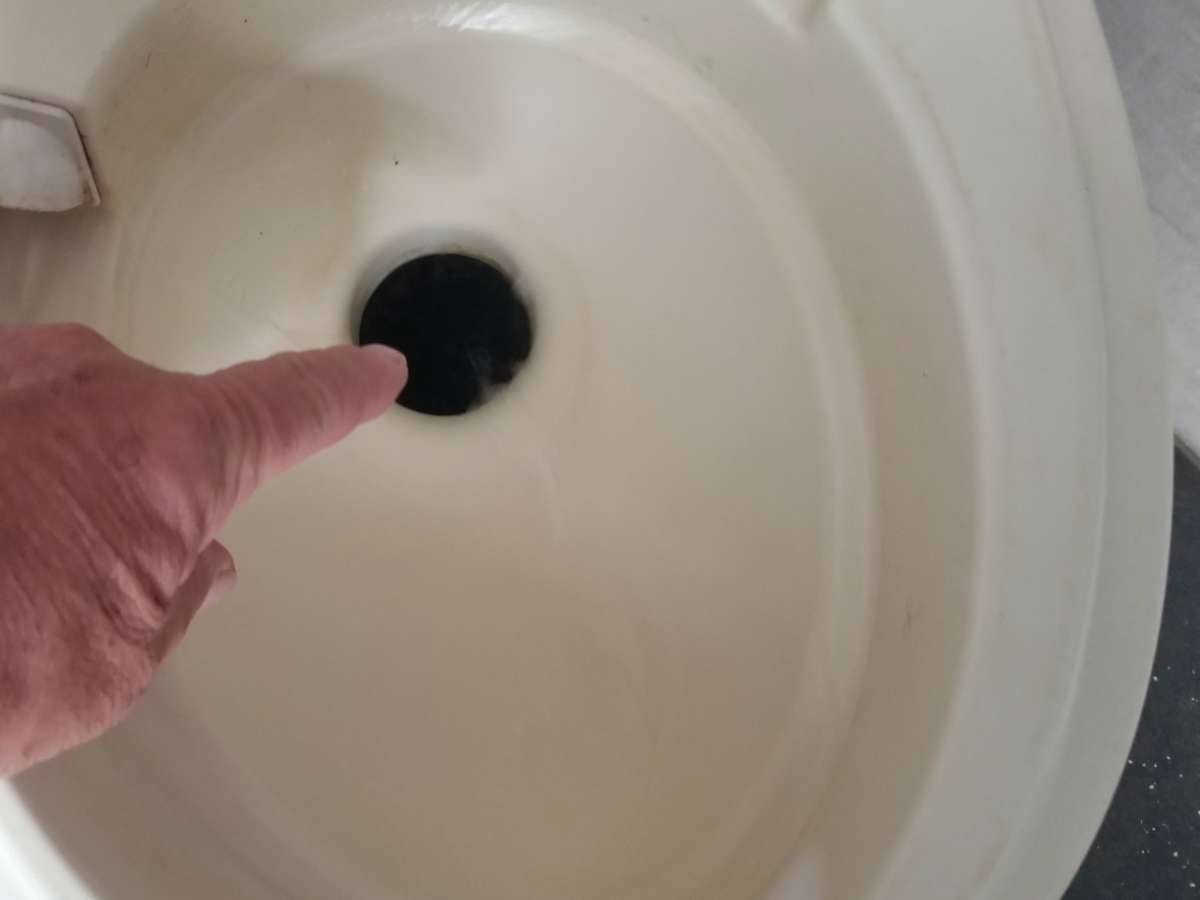Wondering how to get RV solar power WITHOUT having any electrical knowledge? Want solar power when RVing… especially when boondocking?
An RV Solar Suitcase is a portable, self-contained solar power and light system that ANYBODY can hook up!
You don’t need any understanding of how electricity works to use a Solar Suitcase when you’re RVing.
(Don’t miss the “related article” to see my RV solar suitcase setup!)
============================
TRANSCRIPT:
Hi I’m Curtis with The Fun Times Guide blog community. And I am going to speak to you today about the easiest solar system that anyone could install with no electrical background at all. It is the portable Solar Suitcase.
This is a 100-watt solar suitcase produced by Renogy, a company in California. It is two 50-watt panels that are hinged together so that they fold together making a small package that fits into this convenient carrying case that comes with it.
The only connections required to make this suitcase function is to simply clip the red lead onto the positive terminal of your battery. And the black lead onto the negative terminal of the battery. Once that is accomplished, you’re all done. And if there is sunlight, you will be charging your batteries.
On the back side of the panel is the charge controller with a digital readout that tells you exactly what your charger is doing. As you can see by this, mine is currently charging at about half an amp — because the sun is just beginning to come up. And it showed that my batteries were at 17%. So they do need a full day’s charging to get back up to normal.
As you can see it folds easily. And these legs retract so that you can close it up. And the cables and everything will go between the 2 panels.
This is a very convenient option for someone who has no electrical experience, no knowledge or understanding of how electricity works — but they want to do some boondocking. And they don’t particularly want to run a generator all the time. A 100-watt panel such as this is adequate to take care of the minimal requirements for an RV such as my travel trailer. Okay… excuse the bright sunlight reflecting… because the sun has just come up.
A Solar Panel System such as this is what I would consider the absolute bare minimum that you would need to be of any real use with an RV. That means that it will handle only the essential requirements that your trailer or motorhome require to be functional. There are parasitic draws on your trailer — such as the LP Leak Detector and the Solenoid Shut-off for the propane. Also, such items as the water heater is likely to have electronic ignition. And your refrigerator also has electronic ignition which turns ON and OFF throughout the day. So, generally if you are just relying on battery power and you are sitting still boondocking, you have 2 days… maybe 3 days maximum… and your battery will be dead. With something as simple as this clip-on solar panel, it will ensure that your RV has enough power to keep the essential functions working pretty much indefinitely. As long as there is sunshine available.
Now, like I say, it is essential stuff only. That means no television, no accessories, and minimal lighting. Hopefully today’s trailers (current model trailers) have LED lighting throughout — which is much more energy efficient and will give you a little more freedom to use lighting. If you have an older trailer with standard incandescent bulbs that will burn up battery power rather quickly. So keep that in mind. This 100-watt panel is bare minimum so that you can function and that is about it.
There are some disadvantages to this type of a system. Because they are an easily portable package they are also quite appealing for theft. I am currently camped in National Forest land where I see very few people. But if I am camped anywhere that people walk around a lot, I make sure that my solar panel is secured with a padlock and a cable — which is attached to the handle of the panel and comes over and is attached to the frame of my trailer. I know locks only keep the honest people honest, but this is a very good theft deterrent.
The other disadvantage with a portable panel is that they are not stable in winds. It does not take much of a wind gust coming from the back of the panel to tip the panel over on its front. As you can see with mine, the lefthand panel has been shattered. But with a simple fix, it is still functional and I expect to get reasonable use out of it. Once the glass is shattered, it will give you splinters of glass that are still adhered to the panel. But to seal the surface, I put 3 coats of polyurethane over the shattered glass which glued everything together. And the loss of efficiency is minimal. The solar panel still functions fine. It’s just not as pretty anymore.
A portable panel system as this will cost you in the neighborhood of $325.
Is this the most cost-effective way to have 100 watts of solar? No, it is not. You can also purchase a 200-watt solar kit, which consists of 2 panels and a charge controller — and by mounting the 2 panels together with hinges, they can fold together as a suitcase. Now this does take a little bit of electronical knowledge or basic understanding to accomplish — but you are, for the most part, getting twice as much wattage for less money than what you pay for this kit.
This kit is designed for people who are basically afraid of electricity and don’t want anything to do with trying to hook it up themselves. So, it IS a useful option for many. And also, if you are just getting into the solar game. it is a good way to start. Because when it comes to solar, you can always add more. And more is better… there is never too much solar power!
Thank you. Have a good day!

